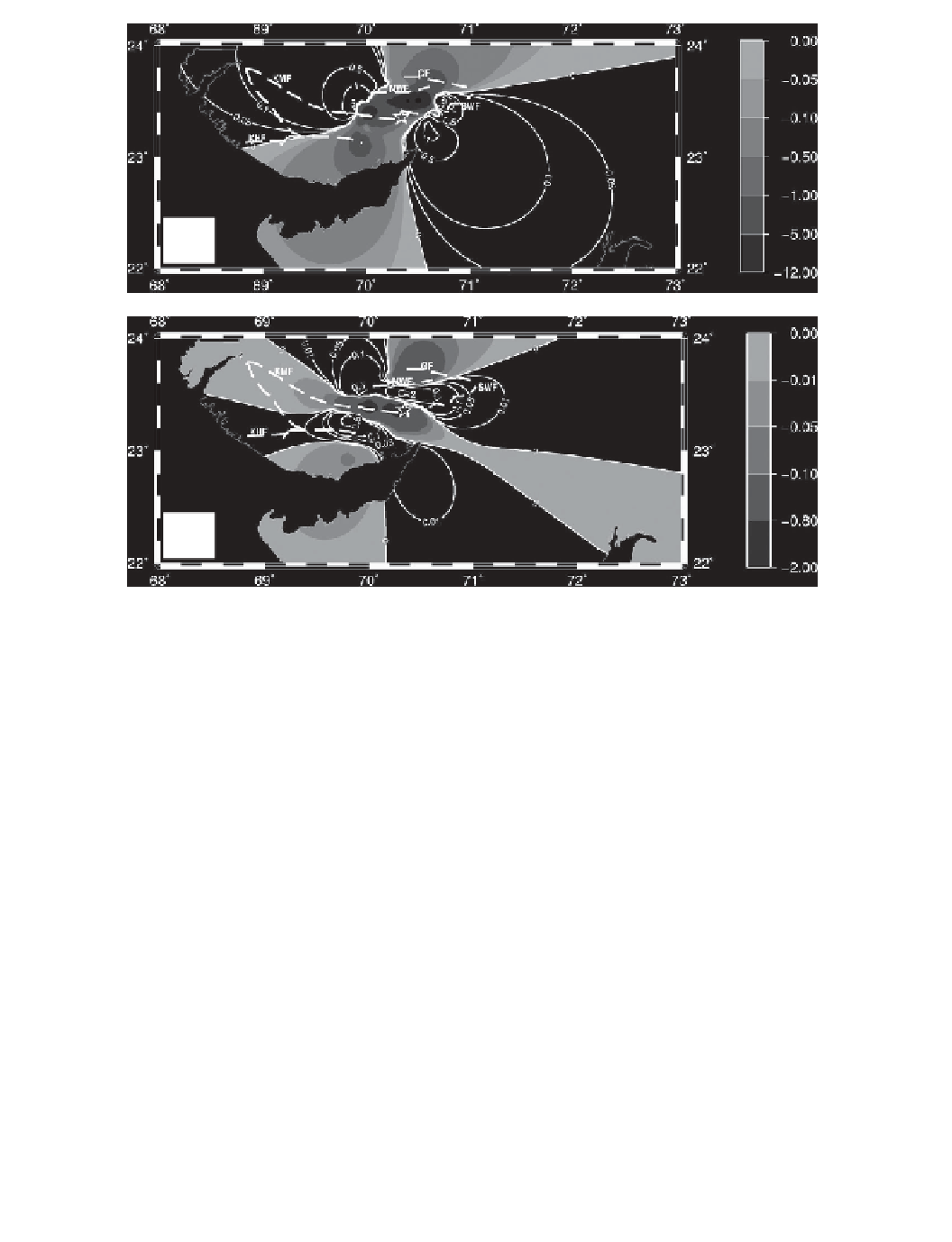Geoscience Reference
In-Depth Information
(a)
(b)
Figure 6.15 (a) Postseismic Coulomb stress changes (in bars) calculated assuming variable slip at
15 km depth due to the M
w
7.7 Bhuj 2001 earthquake soon after the earthquake (2001 mainshock
epicenter is marked as a star and negative Coulomb stress areas are shaded). Maximum stress change
is 12 bars while a rise of 1 bar extends up to 100 km. (b) Six years after the earthquake. Aftershocks
and triggered earthquakes (during 2006-12) have occurred in the zones of positive stress change up
to a distance of 75 km in Kachchh along the SWF in the east and the IBF and some other faults in the
north, as well as up to 240 km south in Saurashtra. Positive Coulomb stress contours are numbered
The Coulomb stress during 2006 estimated by considering the viscoelastic process
(Rastogi
et al
., 2013b) is shown in
Figure 6.15b
.
After 6 years the Coulomb stress remains
positive towards the western part of the IBF (where a few earthquakes other than aftershocks
occurred during 2006-12 along the IBF and Gora Dungar Fault) and negative along the
eastern part of the IBF as well as around the KMF. It changes to positive towards the SWF
and south of the KMF (maximum positive 2 bars), where seismicity that is not aftershocks
was triggered from 2006 onwards. Some mainshocks, e.g., 2006 M
w
5.6 along the Gedi
Fault and M
w
5.1 on June 19, 2012, north of the NWF, have occurred in the negative zone
of Coulomb stress. This indicates the influence of the stress pulse in these areas.

